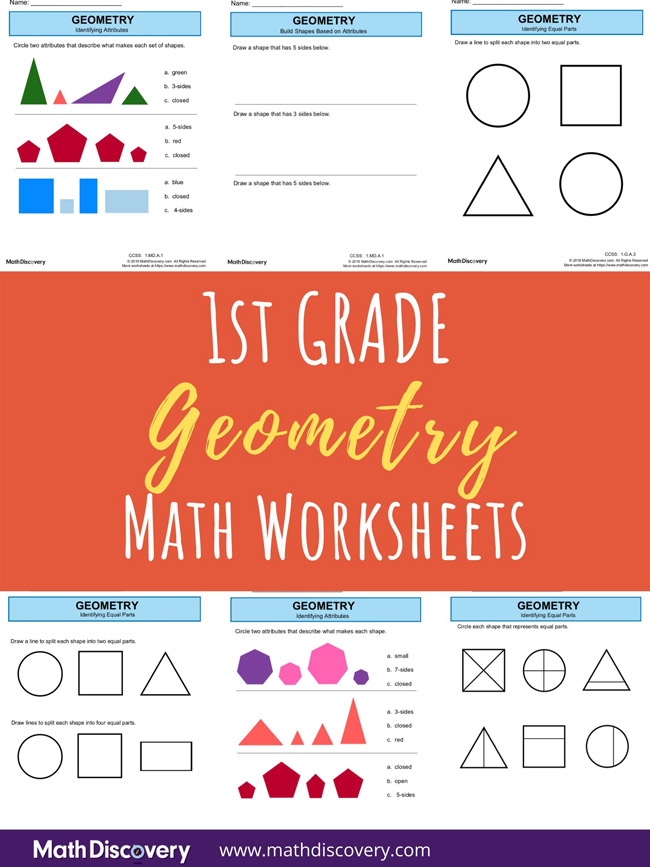1st Grade Geometry Worksheets

1st Grade Geometry
First grade geometry involves several foundational concepts that are important as students begin to build their math skills. Students compare the attributes of shapes and identify how shapes are alike or different. They combine shapes to make more complex shapes. Students also build their conceptual understanding of fractions by identifying equal parts and dividing shapes into equal parts.
The most important geometric skill in 1st grade is the beginning of fraction exploration. Students identify and draw equal parts in everyday situations, such as any sharing situation. Have students share food and toys in equal parts. Any time fraction language is used, such as half, fourth, or quarter, have students verify that the part described is truly an equal part of a whole. Often in our everyday language, we use half to describe sharing two parts of something, but the two halves are not always exactly the same. Help your 1st-grade students identify these situations and reinforce the skill by pointing out that the parts are not truly halves unless they are equal parts of the same whole.
(See complete 1st Grade Math Curriculum)
